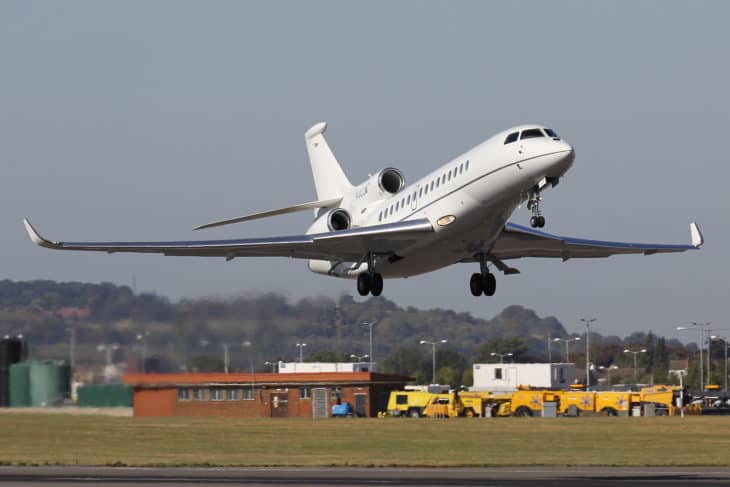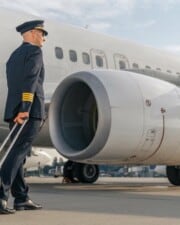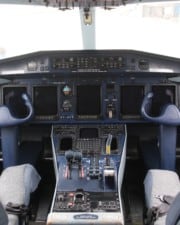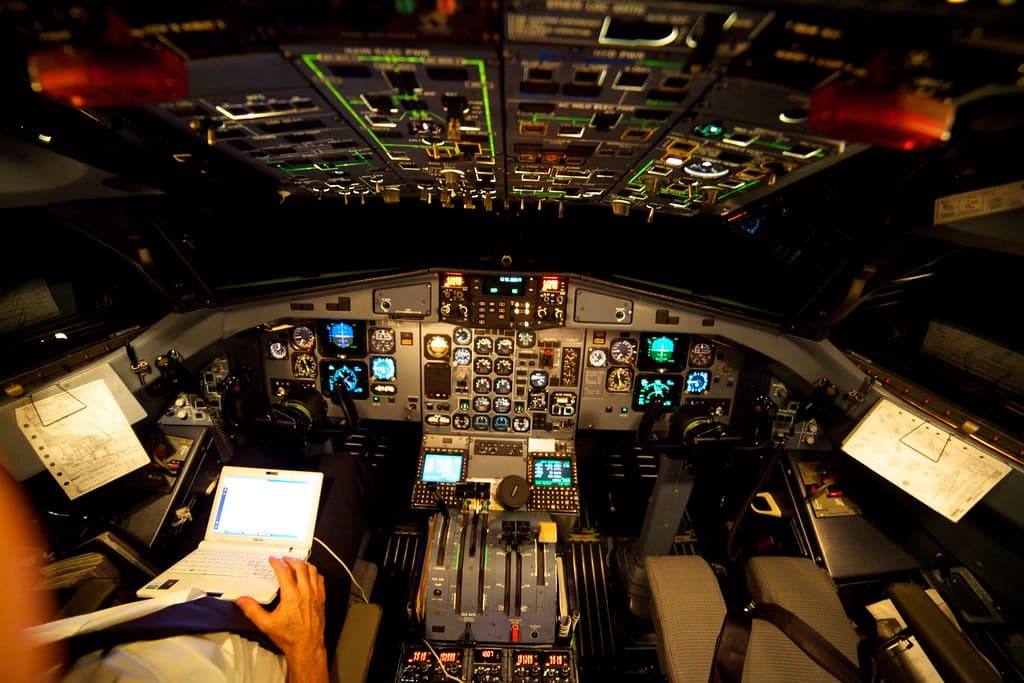Have you ever been on an airline flight that did a go-around? Chances are quite a few passengers were freaked out by the experience as the plane seemed like it was making a normal landing, but the pilot suddenly put it into a power climb. It provides the pilot a way of abandoning a landing when it is unsafe to complete for any reason.
Table of Contents
A go around is simply an aborted landing attempt. Instead of continuing the approach and landing, the pilot adds full takeoff power, retracts the flaps slowly, and establishes a climb back to a safe altitude. Go-arounds are done all the time, and they are routine flight maneuvers.
What is a Go-Around Procedure?
A go around is done to wave off a bad or ill-advised landing. The procedure involves safely transitioning the plane from a descent into a maximum performance climb. Sometimes pilots use go-arounds due to an unsafe condition, such as an object or vehicle on the runway, and sometimes they are due simply to the pilot wanting to give the approach another shot.
How Do You Fly a Go Around?
Go-around procedures are slightly different in every airplane. That’s one reason that it’s so essential for pilots to practice them carefully and often.
When is a Go-Around Appropriate?
A wise flight instructor once said that a good pilot is always planning to go around on every landing. What they meant was while everything might be going to plan, the approach looks perfect, and the crosswind corrections are working, there’s always the possibility that something could still go wrong at the last minute.
Here are just a few reasons that a pilot might need to perform a go-around and abort a landing attempt. These are just a few examples because the list of possible reasons is virtually endless.
As a pilot, you might go around because…
- You need to practice the go-around maneuver.
- The air traffic controller tells you to.
- The aircraft before you is going slower than expected (taking off or landing), and spacing is not assured.
- The plane coming behind you is going faster than expected.
- Your plane’s approach is not stabilized.
- The crosswind on the runway is much stronger than you expected.
- An unexpected wind shift occurred, and you don’t have time to react.
- You see an animal on the runway.
- FOD (foreign object debris) on the runway
- A ground vehicle is on the runway
- Another plane is on your runway
- Another plane is landing or taking off on an intersecting runway, and spacing is not assured.
- The controller tells another pilot to “hold short” of your runway, and you see that they aren’t stopping.

Go-Around Procedure
While it sounds easy to “abort the landing,” a go around is actually a pretty complicated maneuver. Not only is there a lot for the pilot to do, but it also involves seeking the maximum performance out of the aircraft while flying very near the ground.
The first phase of the go-around is the decision to make one. This is what that wise flight instructor mentioned above was referring to. You shouldn’t have to think too hard about it, because you’re ready to do it anyway. If every landing approach ends in a go-around–and you only touch down sometimes when you get lucky–you are mentally ready for the go around.
During this phase, the aircraft is in the approach to landing phase. It probably has a low power setting, full flaps, and is descending steadily.
Once the pilot decides to go around, the process phases are 1. power, 2. pitch, 3. flaps, and 4. climb.
1. Power
The pilot must smoothly advance the throttle or power levers to full power. Piston aircraft do not take too kindly to having the throttle thrown to the firewall suddenly. Instead, you should advance it swiftly and positively, but not suddenly. Let the engine build up the power as you advance the lever, but do so quickly.
Engines with FADEC controls or jets with power levers don’t need to worry about it and can move the levers as quickly as their arms can move. Many aircraft like this are equipped with a TO/GA (takeoff/go-around) button to command maximum power out of the system.
2. Pitch
The next phase is to transition the plane from a nose-low landing approach attitude into a more level one. Since the flaps are still in the landing configuration, the plane will begin climbing with a much nose-lower deck angle than during a normal no-flap takeoff.
To this end, the pilot should begin establishing the climb by simply leveling off. Bring the nose up to the horizon, but no farther. The added power may have done this for you, especially in a plane with a conventional empennage where the prop wash passes right over the horizontal stabilizer. A common problem pilots have during go-arounds is the tendency to overpitch, which could induce a stall.
3. Flaps
This is another problem area for pilots where caution is warranted. If you retract the flaps all at once, the plane will lose a lot of lift. It might stall or begin sinking before a climb can be established if you do that.
Instead, you should retract the flaps very slowly. However they are divided up in your aircraft, bring them up a little bit at a time. After each retraction, correct the aircraft’s pitch to maintain a performance climb.
For example, Cessna pilots know that the go-around procedure C172 and older C150/152 models require you to retract the first notch of flaps immediately. This is because the plane has a very deep flap setting, with a draggy 40-degrees of flaps for landing. This creates too much drag to get these low-powered planes climbing, so it is vital to retract the flaps a bit to get any climb performance at all.
4. Climb
Finally, the goal of a go-around is to wind up in a stabilized climb to a safe altitude, as if you just departed the runway. This usually means climbing at Vy (maximum rate of climb airspeed) until at a safe maneuvering altitude, like in traffic pattern. If obstacles are in the area, you might choose to climb at Vx (best angle of climb) instead.
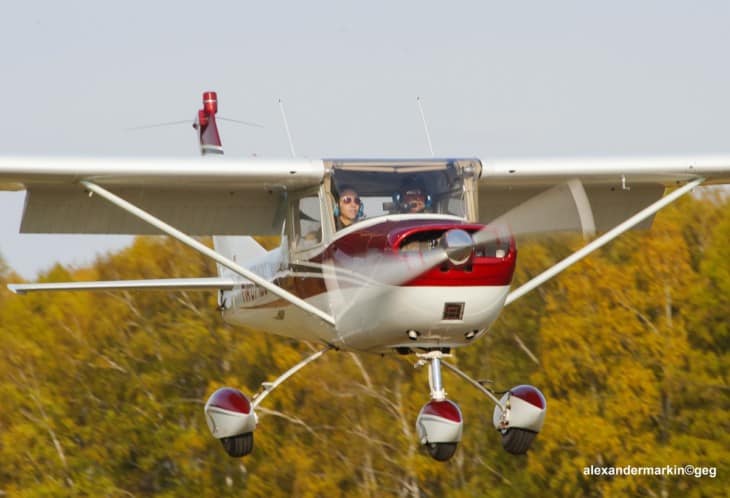
Are Go-Arounds Dangerous?
Go arounds are not dangerous in themselves, but they are complex maneuvers that all pilots must practice to get right. As you can see from the outline of procedures above, there are plenty of ways for a pilot to do it wrong.
The good news is that most pilots are pretty well-versed in the go-around. Or, at least they are when they first start flying. You see, since go-arounds are used when something isn’t right, and a safe landing cannot be completed, student pilots wind up doing a lot of go-arounds. In fact, they often do more go-arounds than landings when they start. Then, as their skills build, they’ll do more and more landings until they hardly ever need to do a go-around.
But even professional pilots routinely do go-arounds. For example, it’s customary to do a go-around or a “low-approach” over the runway in some parts of the world to ensure that everything is good for landing. At uncontrolled airports or off-airport landing sites, this gives the pilot the chance to inspect the runway area for hazards before they touch down.
Commercial airline pilots go around occasionally, too. Usually, this is done at busy airports when another plane is on the runway, or the air traffic controller needs the plane to go around for some other reason. But it can also occur due to wind shear–the sudden change in wind speed or direction that makes a landing approach unstable.
Go-Around vs a Touch and Go
These maneuvers involve the plane transitioning from a landing into a climb, but a touch and go occurs after the plane has already landed. So a touch and go includes a landing approach, flare, landing, takeoff, rotation, and departure climb out.
On the other hand, a go-around includes only a landing approach and departure climb out.
But more to the point, there is a different intent to the two maneuvers. A go-around is done unexpectedly–something changed that the pilot didn’t like, or they were told they had to go around. On the other hand, a touch and go is a planned maneuver from start to finish. A touch and go can be aborted and turned into a go-around at any time, but a go-around can’t become a touch and go.
Missed Approach vs Go-Around
In instrument flying, there is a maneuver called a missed approach. It can be thought of as a go-around for instrument pilots, although instrument pilots also need to do VFR go-arounds, too.
A missed approach is a portion of an instrument approach procedure (IAP) that occurs after the missed approach point (MAP). If, at the MAP, the pilot cannot see the runway environment and cannot make an approach and landing, then they fly the missed approach procedure. This navigates the plane safely back to the enroute environment at a safe altitude.
Missed approaches are done in instrument conditions and usually at higher altitudes. The MAP is usually crossed at about 600 feet above ground level (AGL) on non-precision approaches and 200 feet AGL on precision approaches. Go-arounds, of course, can be done at any altitude but are generally done very near the ground in visual flight conditions.
References ▾
Related Posts
